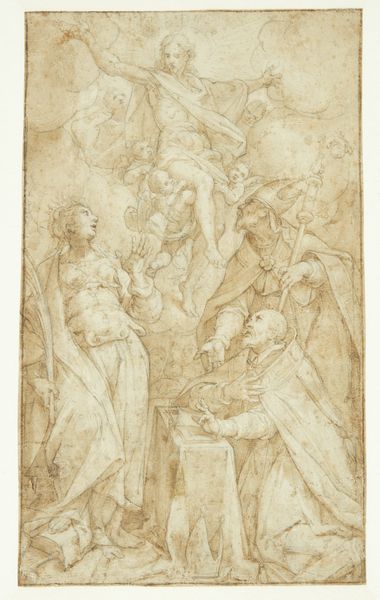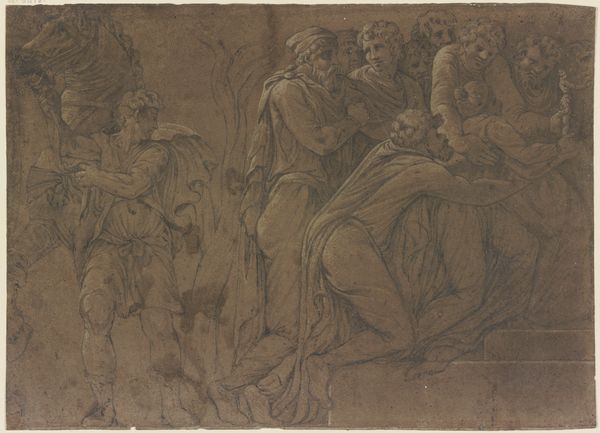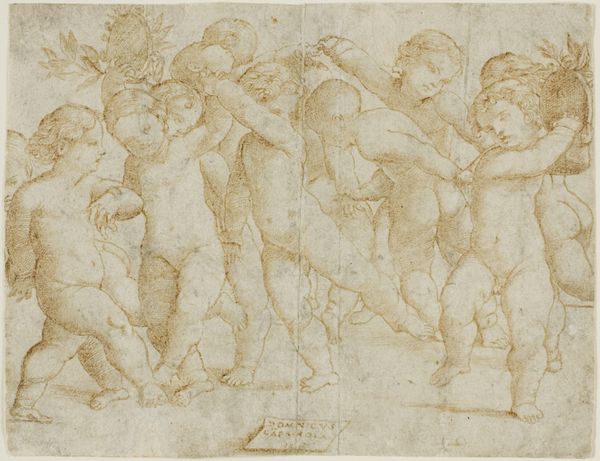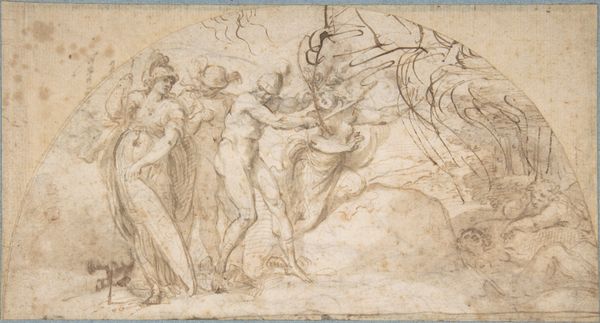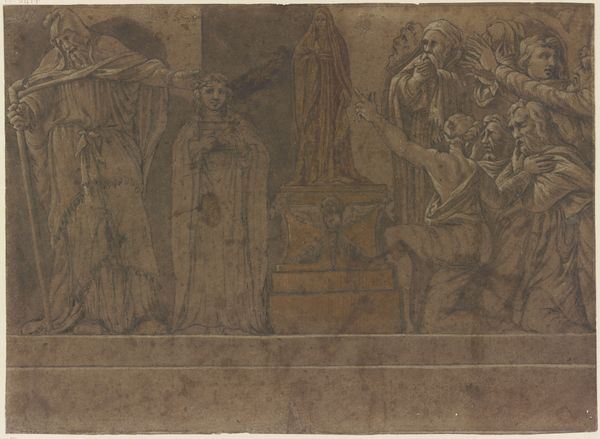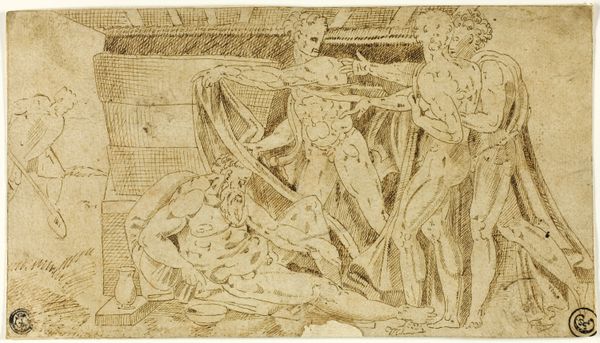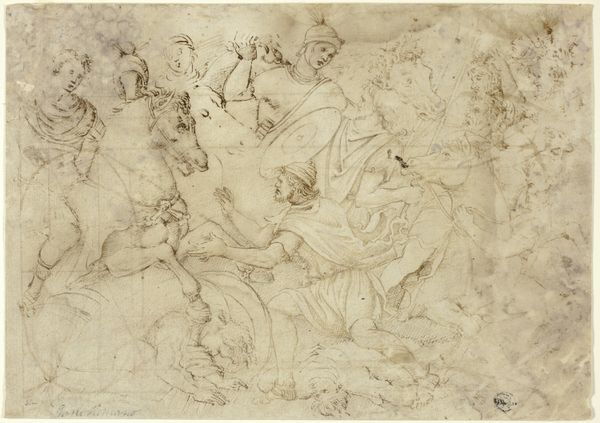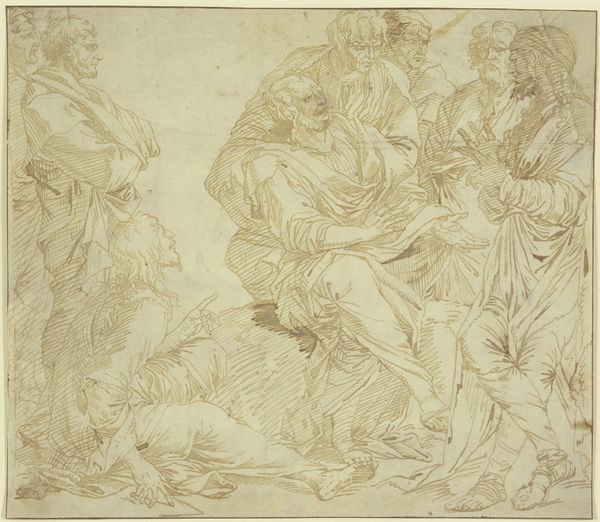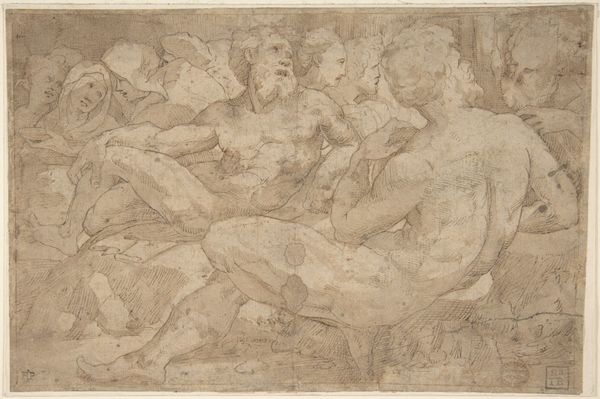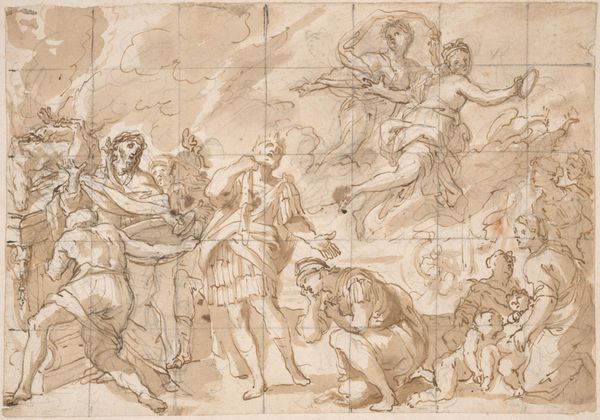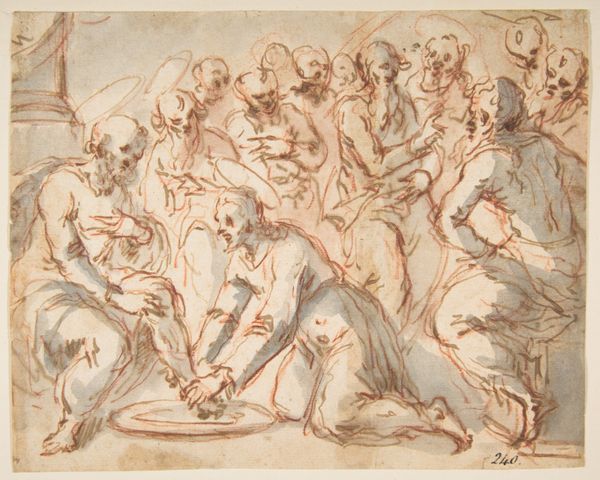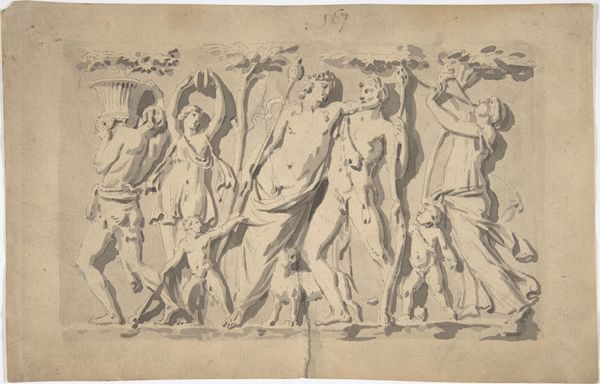
drawing, paper, ink
#
drawing
#
ink painting
#
mannerism
#
figuration
#
paper
#
ink
#
history-painting
Dimensions: 5 1/4 x 8 1/8 in. (13.34 x 20.64 cm) (sheet)6 3/16 x 8 13/16 in. (15.72 x 22.38 cm) (mount)
Copyright: Public Domain
Curator: Before us is "Procession," an ink drawing on paper created around the 16th century by Andrea Boscoli. It currently resides here at the Minneapolis Institute of Art. Editor: My immediate impression is one of carefully orchestrated movement. The sepia tones and the relatively compressed space contribute to the sense of a tightly knit group advancing, almost deliberately, from left to right. Curator: Indeed. Boscoli's piece showcases the Mannerist style with its exaggerated forms and dynamic compositions. Considering the likely patronage for this work, we can think about the ways historical paintings depicted processions to assert power and order. Editor: I'm captivated by the deliberate rendering of each figure, all variations on the human form, but slightly elongated. The almost theatrical poses enhance the rhythmic cadence that one can sense here, in the slight differences from figure to figure. Curator: Precisely. When observing similar historical portrayals of power, especially when figures move from one place to another, a viewer has to consider that there were real life displays which also had cultural and political meanings. Boscoli then distills the drama of public performance for a select, privileged audience. Editor: This restrained use of ink also draws my attention. The layering creates areas of relative darkness, which emphasize select body parts while still creating depth with hatching strokes. What seems on the surface to be simple lines are really sophisticated formal maneuvers that highlight gesture. Curator: Considering its context—Boscoli's piece presents an intriguing intersection of artistic license and social representation that allows us to think about history as a continuum. The piece isn't simply recording a real event but is communicating the values associated with historical identity. Editor: Looking at it again, one can appreciate the piece as a study in movement. Its value comes from those artistic choices rather than only from its record of what happened. It pushes our perspective of form, guiding us towards more profound modes of vision, wouldn't you agree? Curator: Ultimately, reflecting on the sociopolitical lens through which art gets produced helps reveal complex and multilayered ideas of self-making and mythmaking during a crucial historical juncture. Editor: Very insightful. These interwoven elements show how this drawing exemplifies a beautiful unity between idea and execution, inviting new appreciation of a period both aesthetically rigorous and creatively charged.
Comments
No comments
Be the first to comment and join the conversation on the ultimate creative platform.
